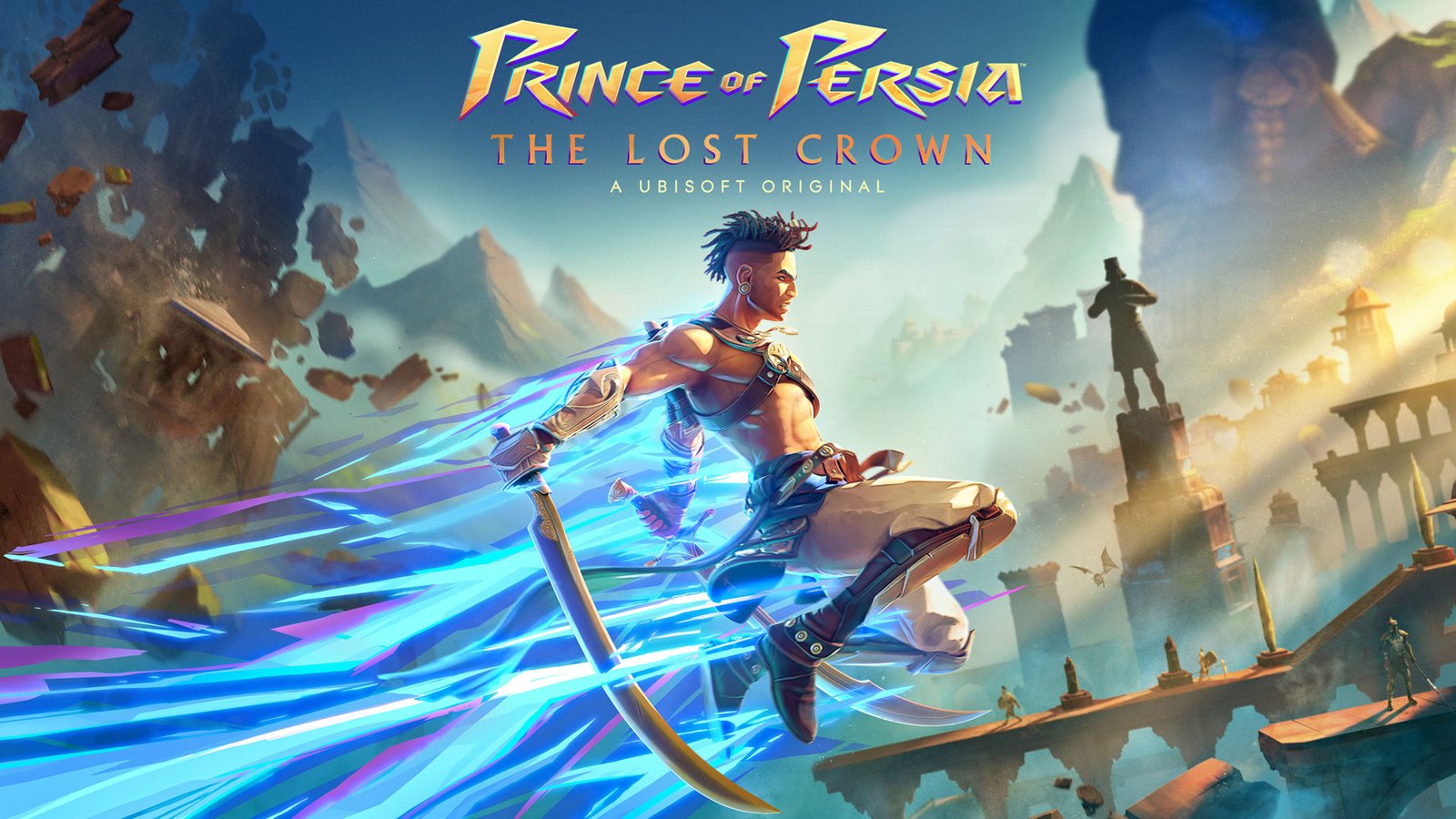Over thirteen years have passed since the debut of the last installment in the Prince of Persia series, The Forgotten Sands, back in 2010. Now, Ubisoft makes a triumphant return with the release of a new game in the franchise, titled The Lost Crown. The burning question on everyone’s mind: Does this latest addition possess the allure and magnetism to reignite the passion of series aficionados? This query shall be scrutinized and addressed in our forthcoming Prince of Persia: The Lost Crown review. But before immersing ourselves into the depths of the game, let’s take a moment to reminisce over the storied history of the Prince of Persia series.
Prince of Persia The Lost Crown
- Gene: Adventures, Action, Platforms
- Play Styles: Single Play
- Release date: January 18, 2024 (January 15 for Deluxe)
- Review device: PlayStation 5
- Developer: Ubisoft Montpellier
- Publisher: Ubisoft
- Age rating: 16
- Available on: Xbox Series X|S, PlayStation 5, PlayStation 4,, Nintendo Switch, PC
Prince of Persia Intro
The Prince of Persia game series stands tall as one of the most illustrious franchises in the realm of video games, renowned for its unparalleled blend of thrill, adventure, and captivating narratives. Its illustrious journey commenced in 1989 with the inception of the original game, and since then, it has undergone remarkable evolution, leaving an indelible mark on the gaming landscape.
At its core, the series distinguishes itself through riveting tales brimming with daring escapades set in enchanting realms. Players assume the role of a prince endowed with mastery in martial arts, climbing, and acrobatics, embarking on exhilarating adventures through dynamic worlds. This hallmark series offers a gameplay experience characterized by ingenious leaps, intricate puzzles, and exhilarating encounters.
Navigating the challenges of time and the perils that beset the prince, the series has garnered widespread acclaim, owing to its impeccable graphics, innovative designs, and captivating narratives. The Prince of Persia games stand as a testament to enduring popularity and influence, maintaining a steadfast grip on the hearts of gamers across generations.
The Story
In this installment of the series, we delve into the captivating tale of Sargon, a youthful Persian warrior endowed with extraordinary abilities inherited from his lineage of immortals. Tasked with a formidable mission, Sargon embarks on a perilous journey to rescue Prince Ghassan, the rightful heir to the Persian throne, who has been abducted and whisked away to the treacherous Mount Qaf.
As the expedition unfolds amidst the daunting terrain of Mount Qaf, fraught with myriad challenges, a sinister twist of fate befalls Sargon as his trusted companions betray him. Thus begins Sargon’s arduous quest to clear his name of the damning accusations and relentless pressures levied against him. The narrative takes an enthralling turn, thrusting players into a labyrinth of intrigue and uncertainty as they unravel the unfolding events of Sargon’s odyssey.
Throughout his odyssey, Sargon hones his combat prowess, confronting mythical beasts and daunting obstacles in his unwavering determination to rescue the prince and reinstate him upon the throne. Will Sargon emerge triumphant in this Herculean endeavor, or will insurmountable obstacles thwart his valiant efforts? Only by traversing the tumultuous events that lie ahead will the fate of Sargon and Prince Ghassan be revealed.
While the game kicks off with a burst of enthusiasm, plunging players into the heart of thrilling battles from the get-go, the excitement proves fleeting. As I embarked on the noble quest to rescue the prince and unravel the narrative, my initial fervor waned, giving way to a sense of ennui attributed to the stage design. Marketed as an open-world adventure, the game’s labyrinthine layout often left me feeling disoriented and confined, detracting from the overall experience. This aspect will be further dissected in the subsequent missions section.
Gameplay
The game boasts an engaging combat system that I thoroughly enjoyed. Yet, it’s imperative to note that the game leans towards the challenging side, offering a formidable experience. Thankfully, Ubisoft has implemented various options to tailor the difficulty level to suit individual preferences. Players can fine-tune parameters such as damage dealt to enemies or mitigate environmental hazards, ensuring a gratifying gameplay experience that aligns with their skill level.
In Sargon’s arsenal lie an array of weapons, tools, and skills employed in his encounters with adversaries. Primary among these are the Dual Blades and the versatile Bow, offering diverse combat strategies. Additionally, Sargon possesses nimble evasion techniques and agile jumping abilities to evade enemy strikes, supplemented by in-game training to enhance combat proficiency as the narrative unfolds. With each progression, Sargon unlocks new abilities, elevating his prowess in combat and infusing encounters with heightened excitement and effectiveness. As the journey unfolds, players can anticipate mastering combat mechanics to engage foes with greater finesse and satisfaction.
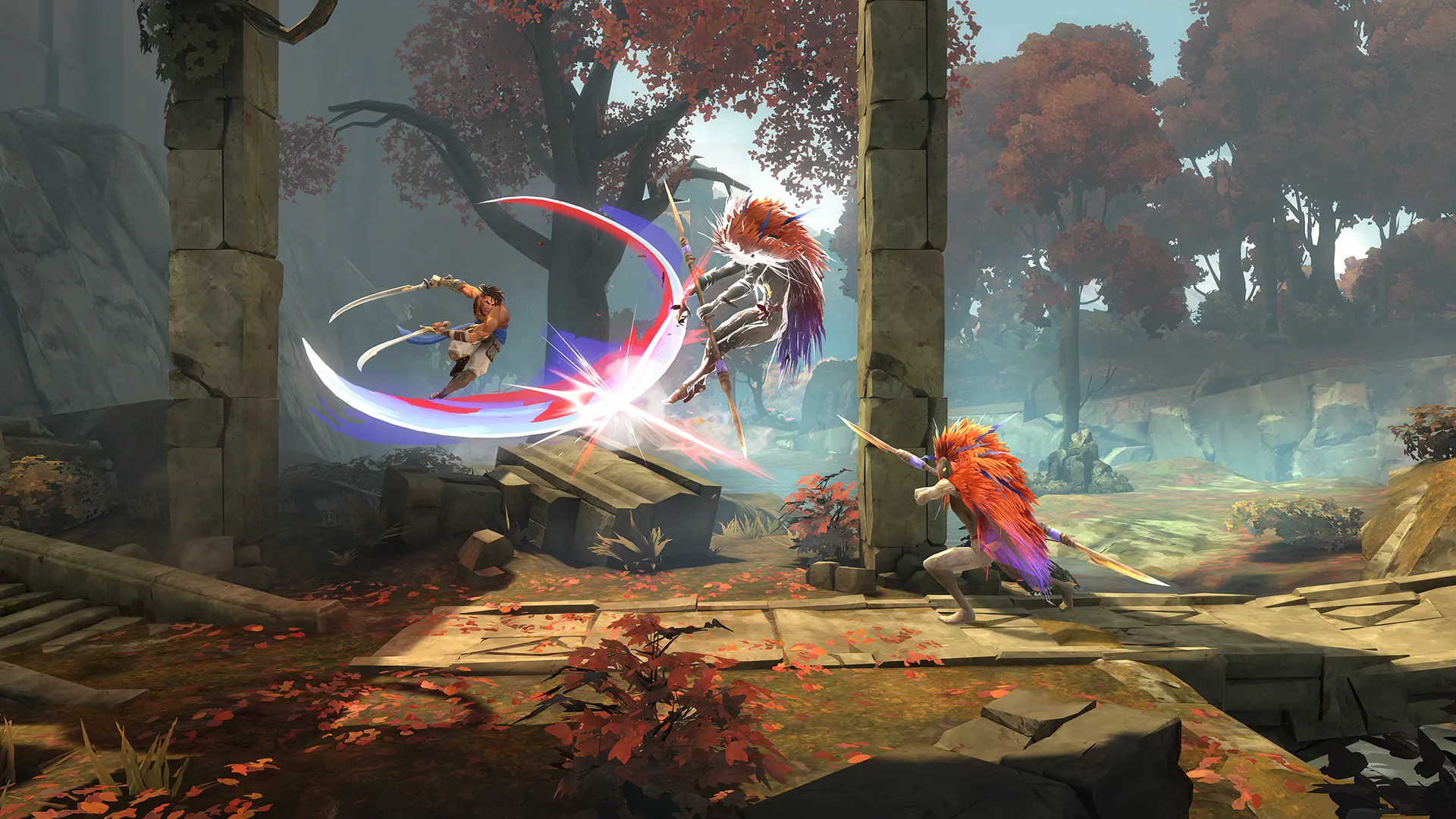
In addition to his weaponry, Sargon possesses a repertoire of special abilities that unfold as he advances through the narrative, including the formidable Verethragna Smite. This devastating technique allows him to decimate swaths of adversaries with a single strike, particularly useful in crowded combat scenarios. Such abilities accumulate during combat encounters, serving as lifelines to aid Sargon in navigating through perilous situations.
Moreover, Sargon wields a versatile chain that facilitates the refinement of his combat prowess. This chain can be further developed and enriched through the Waq Waq tree, with new abilities augmenting his fighting capabilities. Components for this enhancement are discovered within chests or scattered across the game’s expansive map. The Waq Waq Tree, found in various regions throughout the game, not only facilitates series development but also offers a means to replenish Sargon’s health.
The game boasts a diverse array of puzzles interspersed within its quests, adding layers of challenge and intrigue to the gameplay. Whether confronted with blocked pathways or the need to reach lofty heights, players must leverage their puzzle-solving acumen to progress. Ranging from moderate to formidable, the puzzles demand strategic thinking and problem-solving skills to overcome, enriching the overall gaming experience with a blend of cerebral engagement and action-packed adventure.
Missions
In open-world games, main quests drive the overarching storyline forward, while side quests, obtained from various characters encountered during exploration, offer additional depth to the game world. Let’s delve into the main missions. The journey unfolds with a transition to the Jabal Qaf region following the completion of the initial mission. Once a place of great significance, Jabal Qaf has since succumbed to catastrophe, transforming into a perilous domain infested with monsters and plagued by temporal disturbances.
However, traversing the Jabal Qaf area often devolved into monotony and tedium. The player frequently finds themselves retracing familiar paths in pursuit of mission objectives, leading to feelings of ennui and frustration. While this repetition may be inherent to the platformer genre and part of the game experience, its persistence risks diluting player engagement and diminishing enjoyment.
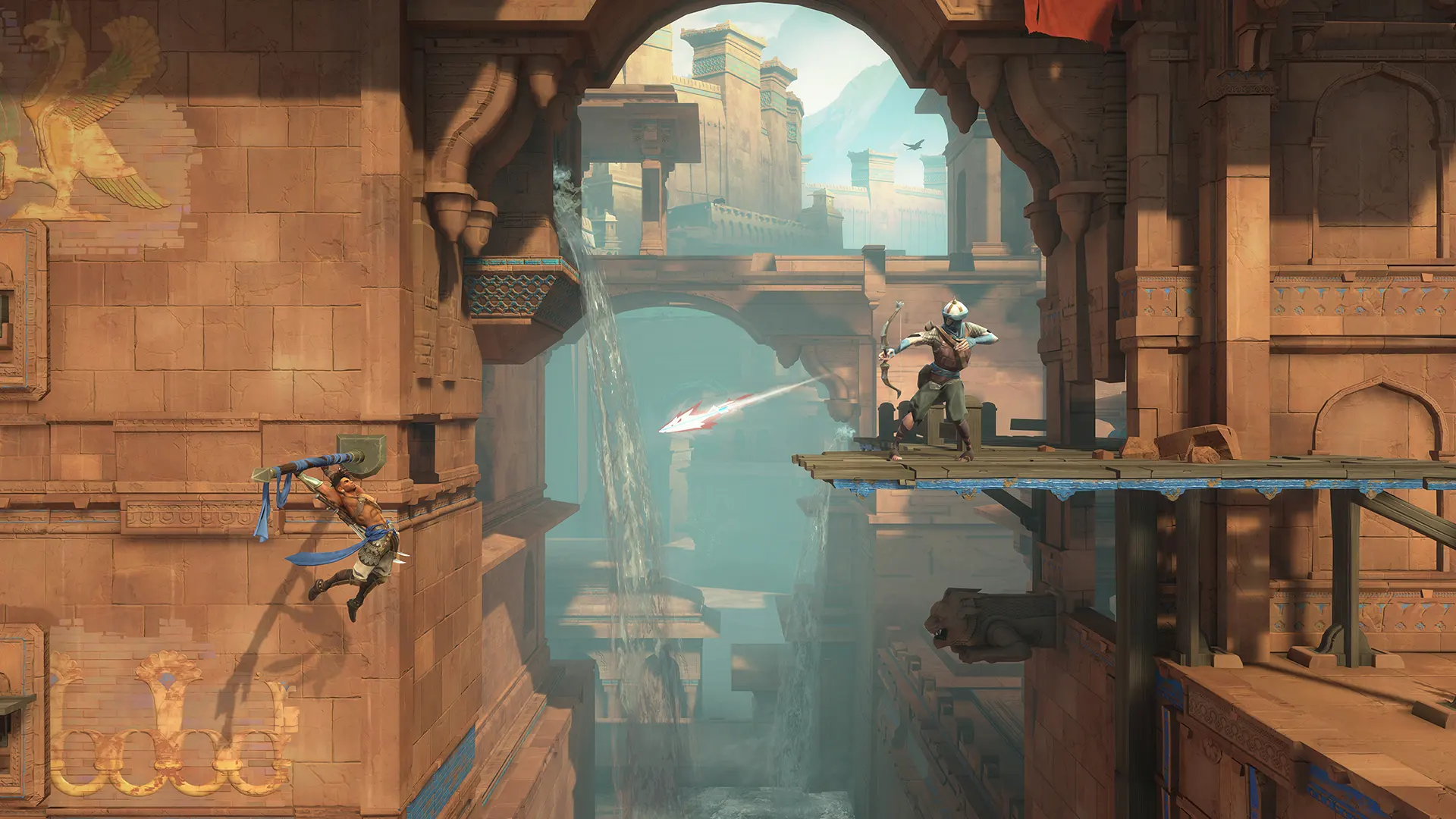
Throughout your gaming journey, you may encounter missions heavily reliant on parkour and platforming skills. However, there are instances where the environment design feels flawed or overly challenging, leading to excessive difficulty, particularly in certain areas. These challenges often expose weaknesses in character control, especially during parkour maneuvers. I frequently faced hurdles in navigating tasks, spending considerable time attempting to reach designated locations, which can amplify feelings of monotony and frustration.
Enhanced control and improved movement precision could significantly enhance the player experience. Implementing fixes or enhancements to the control system would streamline the completion of missions that hinge on precise movements, mitigating frustration levels and fostering a more enjoyable and motivating experience.
Within the Qaf Mountains region, numerous characters offer side quests or vend abilities and tools. Players can acquire these items using crystals obtained from vanquishing enemies. The exploration experience in the game is bifurcated into two categories: free exploration and indicative exploration. In the former, players are left to freely explore areas and undertake missions without explicit guidance, while the latter provides direction and instructions regarding mission locations, facilitating player navigation along the correct path.
Game fun
Undoubtedly, the game evoked a sense of nostalgia, reminiscent of the bygone era when gaming experiences were constrained by technological limitations. However, the series’ departure from its traditional roots in favor of an open-world format, coupled with occasional instances of excessive repetition, diluted the overall fun and excitement. The open-world map, resembling a Platformer game, proved challenging to navigate and decipher, detracting from the seamless immersion into this new style of gameplay.
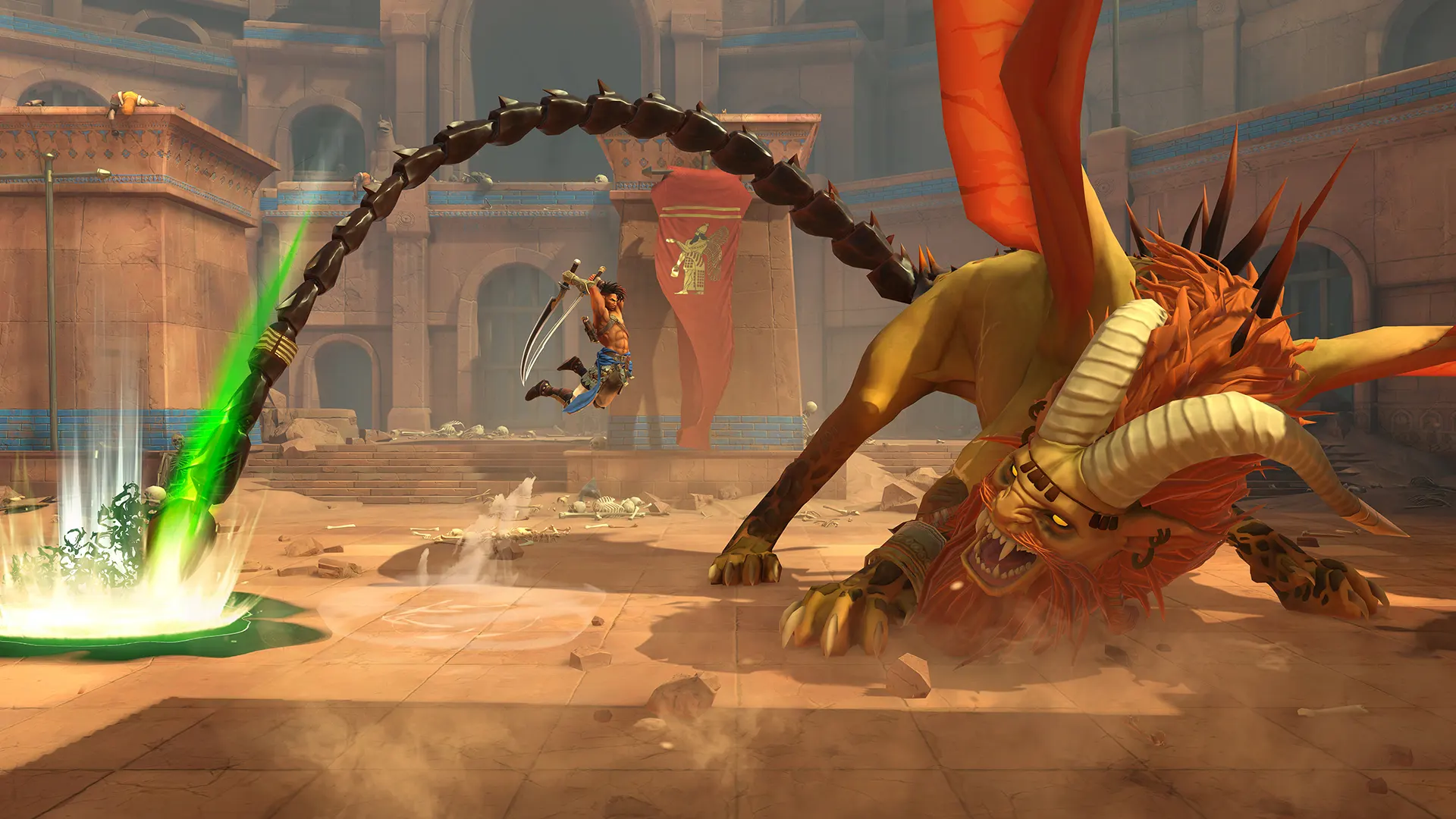
Conversely, the combat mechanics shone brightly, particularly upon mastery of the fighting techniques. Engaging adversaries in combat and unleashing special abilities infused exhilarating dynamics into confrontations. Even when facing formidable bosses, the experience remained enjoyable, requiring keen observation of their movements and skills. This aspect of the gameplay struck a perfect balance between challenge and enjoyment.
Graphics
The game boasts remarkable graphics tailored perfectly for platformer games, showcasing meticulously crafted environments and character designs. Despite the absence of cinematic sequences, the visuals remain impressive, complemented by stunning effects during battles. Retaining the essence of the original Prince of Persia series, the game delivers a fresh and refined experience, seamlessly blending classic gameplay elements with contemporary enhancements that resonate with the gaming landscape of 2024.
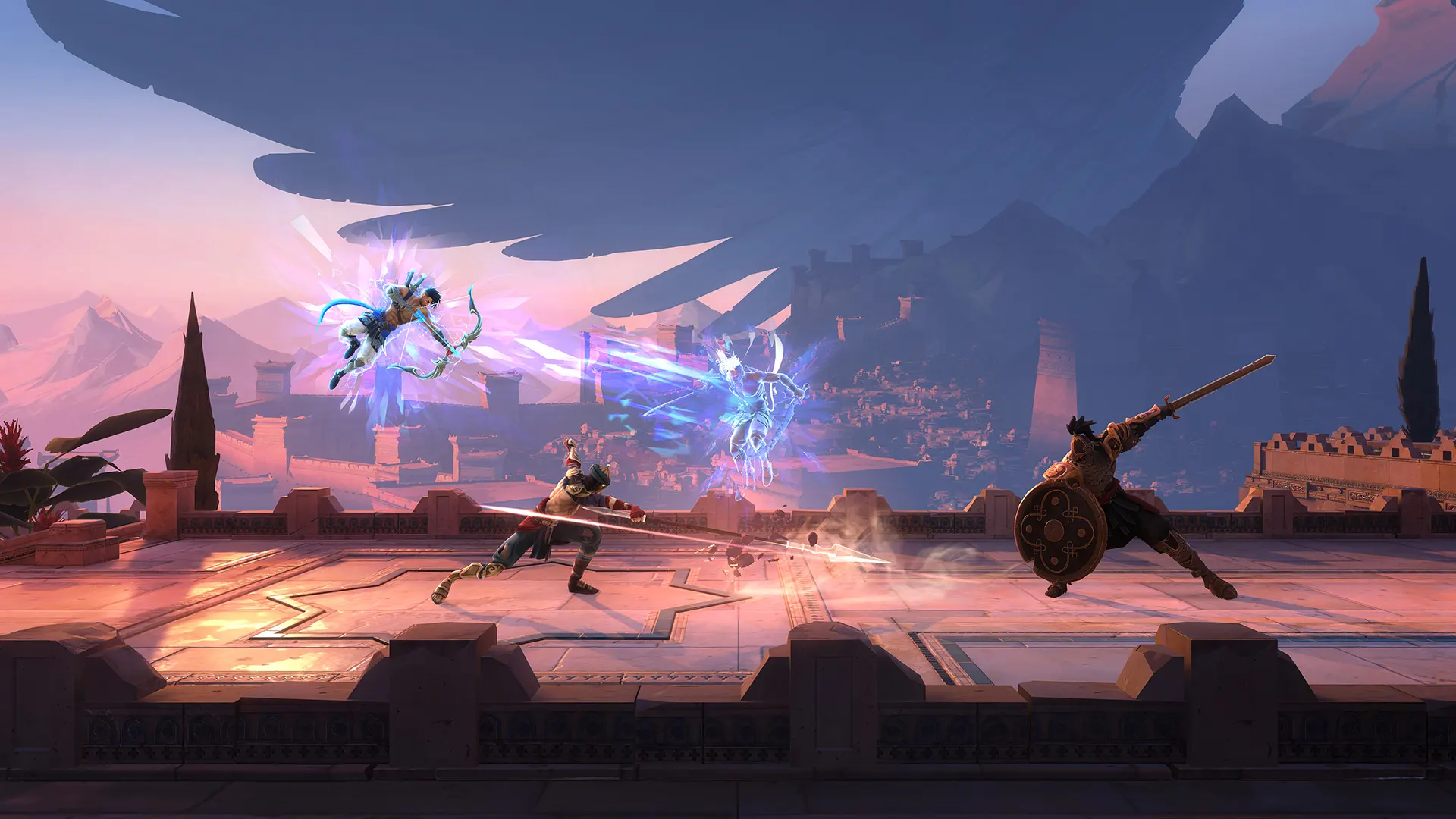
From a technical standpoint, the game delivers a seamless and hassle-free experience devoid of any irksome technical glitches such as frame rate drops or other issues. This smooth performance owes itself to the game’s optimized design, ensuring compatibility with both current and previous-generation platforms without necessitating high-powered hardware.
Pros
- Embark on a nostalgic journey to the beloved realm of Prince of Persia.
- Experience a straightforward and user-friendly promotions system.
Cons
- Encounters repetition and occasional monotony in certain tasks.
- Navigating the player control system proves challenging, notably evident in parkour segments.
- Encounters excessive difficulty executing certain parkour maneuvers.
Summary
The Story - 8
Gameplay - 8
Graphics - 8
Game fun - 8
8
Good
Prince of Persia: The Lost Crown marks a commendable comeback for one of gaming's most beloved franchises. However, the transition from linear gameplay to an open-world format has somewhat marred the overall experience. This shift has diminished the game's allure, leading to significant time wasted deciphering the world map and navigating quest locations. Had the game retained its linear structure, albeit with some open areas, the experience would have been more cohesive and undoubtedly garnered a higher rating.
